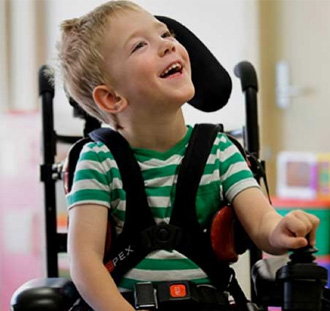
- Cerebral palsy is a group of neurological condition which puts impact of Movement, Balance Coordination, Posture and Tone of body partially or completely
- It is the child hood disability which is very much common.
- It varies from mild to severe degree
- It is not contagious
- It may or may not affect intelligence
- Ability of an individual improves with correct early intervention
CAUSES:
- CP is cause by brain injury or abnormal development of the brain that accrue when child’s brain still developing – before birth, during birth or just after birth like lack of oxygen during delivery or labor, respiratory distress, post natal jaundice , infections and many more.
Types of cerebral palsy
Based on tone
- Spastic/ Hypertonic ( stiffness in the body , restricted joints)
- Flaccid/ Hypotonic ( excessive flexibility , weak muscles)
- Mixed ( partial stiffness and partial flexibility)
Based on body part involvement
- Quadriplegia ( involvement of legs , arms, and trunk )
- Diplegia (involvement of lower limbs only or sometimes mild involvement of upper limb)
- Hemiplegia ( involvement of one side of the body )
Based on body movement
- Athetoid cerebral palsy ( random and uncontrolled body movements)
- Ataxic cerebral palsy ( Balance and coordination issues)
Symptoms
- Limited range of movement
- Poor coordination and balance
- Stiff muscles
- Abnormal postures
- Over or underdeveloped muscles
- Preference of one side over the other.
- Delay in development
- Hearing and vision issues
- Seizures/ epilepsy
- Poor oral control like feeding , sucking, swallowing, chewing etc
- Frequent startling
- Salivation
- Speech and communication difficulty
- Poor hand writing and Attention issues
Treatment
Everyday therapies are very important for maintaining quality of child’s life
- Conventional physical therapy
- Neurodevelopmental therapy
- Occupational therapy
- Kinesio taping
- Postural correction
- Aids and appliance application
- Sensory integration therapy
- Pre-vocational training
- Feeding training program
- Parents counselling
